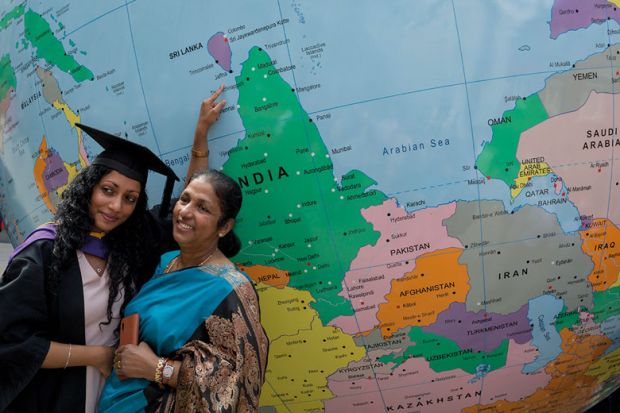The UK should aim to have 100,000 Indians studying at its universities by 2025, according to a report led by the former universities minister Lord Johnson of Marylebone, who said the country “should perhaps be even more ambitious” if it meets this target early.
Such a goal could be achieved by further easing barriers to educational mobility, including putting India on the “low risk” list for student visas and considering going further on post-study work opportunities, according to the paper, published on 9 December.
The report from the King’s College London Policy Institute, which follows an analysis earlier this year that raised questions about the UK’s education and research links with China, presents a five-point plan for strengthening “knowledge” ties with India.
They include the goal to double student recruitment; official mutual recognition of credits and qualifications; a “sector-backed” loan funding programme for Indian students; steps to help more Britons to study in India as part of the Turing mobility scheme; and increasing funding for research collaboration to “promote frontier science”.
It argues that negotiations on the free trade agreement (FTA) between India and the UK, due to start next year, provide an ideal opportunity for these goals to become “building blocks” for a “comprehensive knowledge partnership” that could sit at the heart of the FTA.
Latest statistics suggest that UK universities are already well advanced towards doubling the 55,000 enrolments from India they had in 2019-20. The number of main applicant student visas issued to Indian nationals in the year to September – a useful if not perfect proxy for university enrolments – was about 76,000, a 170 per cent increase from two years before.
Lord Johnson told Times Higher Education that if growth continued at such a pace and the 100,000 could be met before 2025, there was no reason not to “raise our sights further”.
“If it ends up that we surpass the 100,000 mark, then we should perhaps be even more ambitious,” he said.
However, while the report recommends measures on student visas that could help to facilitate such an increase, it says these should be coupled with strengthened regulation to prevent fraud and abuse of the system.
Concerns about visa abuse, and a UK government target to bring net migration down to the tens of thousands, led to a previous Conservative government closing the post-study work route and a sustained drop in recruitment from India in the 2010s.
In response, the report advocates better use of technology to verify qualifications, improved ways of students obtaining and proving financial backing, such as through the sector-backed loans programme or a guarantee scheme similar to one used in Canada, and requiring universities “to adopt more rigorous measures to drive out fraud and abuse in the recruitment process”.
But despite the risks, Lord Johnson stressed that net migration in the UK was currently “very, very low” and that recruiting more students from India, even if many stayed to work post-graduation, should not risk political problems.
“If anything, we have quite significant labour market shortages in certain areas, and having highly educated students who have done degrees at our world-class universities can…help considerably address these shortages,” he said.
The paper calls for UK Research and Innovation to “strategically grow the scale and scope of system-to-system funding agreements with leading agencies in India”, and proposes creating a £1 billion general fund for international collaboration that can be “more strategically focused, and more long-term, dependable and stable”.
Register to continue
Why register?
- Registration is free and only takes a moment
- Once registered, you can read 3 articles a month
- Sign up for our newsletter
Subscribe
Or subscribe for unlimited access to:
- Unlimited access to news, views, insights & reviews
- Digital editions
- Digital access to THE’s university and college rankings analysis
Already registered or a current subscriber?








